
18 minute read
Breaking Ground
Orb from Seattle’s Circle of Fire crew does a head freeze at the first Lords of the Floor event in 2001.
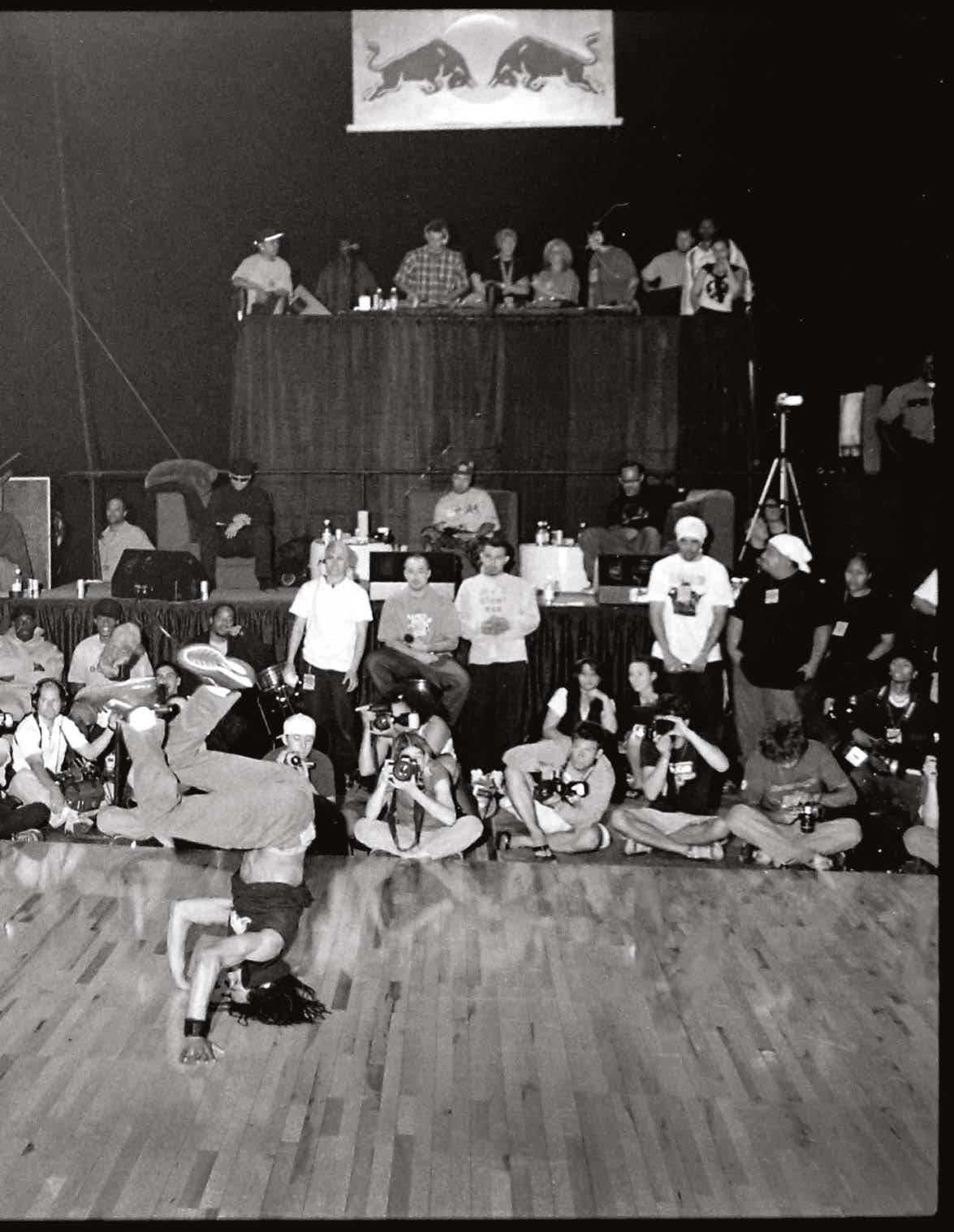
Twenty years ago, a trailblazing event in Seattle—Lords of the Floor— revolutionized competitive breakdancing. Now, with breaking set to make its Olympic debut in 2024, this is the story of how this athletic art form evolved from a fringe activity into a global phenomenon. Words JEFF WEISS

B-Boy Crumbs of the California crew Style Elements at Lords of the Floor in 2001.
I
t began with 64 crews vying for the throne. But one by one they slowly met their fate, until only the “Great 8” remained. Flown out from all across the United States, the dancers assembled in their baggy cargo pants and basketball jerseys at Seattle’s Sand Point Naval Station. This was the B-Boy battle to end all battles, the one that everything had been building toward. It was the spring of 2001 and all the formidable cliques were there: the Skill Methodz, the Rhythm Bugs, the Massive Monkees, the L.A. Breakers, the Boogie Brats, Circle of Fire, Style Elements and HaviKoro. These were the Lords of the Floor.
Sponsored by Red Bull, the two-day tournament was the brainchild of Bob “the Balance” Foxhoven of Seattle’s Circle of Fire crew—the same one that had represented the United States in the legendary international Battle of the Year competition in 2000. But this event somehow felt different. The U.S. might have invented hip-hop—which included breakdancing among its foundational four elements—but it had already begun to evolve into a global phenomenon. In its ancestral cradle, major events like the B-Boy Summit, the Freestyle Session and the yearly Rock Steady Anniversary remained mandatory pilgrimages for any self-respecting breaker, but no one had ever seen anything domestically that could match the scale of Lords of the Floor.
Z-Trip, the master turntablist and future mash-up pioneer, manned the decks. Ken Swift of the immortal Rock Steady Crew was a judge. The room boasted a freshly waxed and springy dance floor that allowed for some of the most athletic and jawdropping moves that anyone had yet unveiled. A soldout audience packed into the crowded armory. For a rebellious subculture spawned from the scorched


Orb from Circle of Fire in 2001.
rubble of the ’70s South Bronx, the dancers were shocked to have masseuses offering them betweenround treatment. The prize money totaled $4,000. It was a leveling up that no one had foreseen.
“It was a seismic leap for breaking,” says Massive Monkees member Jeromeskee, who performed while still a high school senior. After the show he headed straight to his prom. “It was the most elite event we’d ever seen. For the first time, B-Boys were treated like rock stars.” And the contest was such a success that Red Bull brought it back the following year.
Rock Steady’s influence and the classic ’80s breakdancing films, Breakin’ and Beat Street, had set the template for the first wave of breaking, but Lords of the Floor revolutionized its possibilities for the next generation. At the 2024 Paris Olympics, breaking will make its debut as an Olympic sport, entering its biggest stage to date. And you can clearly trace its rise back to those two early Lords of the Floor events, which revealed wide appeal through a blitzkrieg of agile power moves, onehanded handstands, dizzying spins and freezes. If the art had been a sacred covenant passed down via in-person tutorials or studied through grainy, hardto-procure VHS cassettes, the Lords of the Floor DVD suddenly became a worldwide grail.
Seth Martinez of Circle of Fire shows off some athleticism at the first Lords of the Floor event.
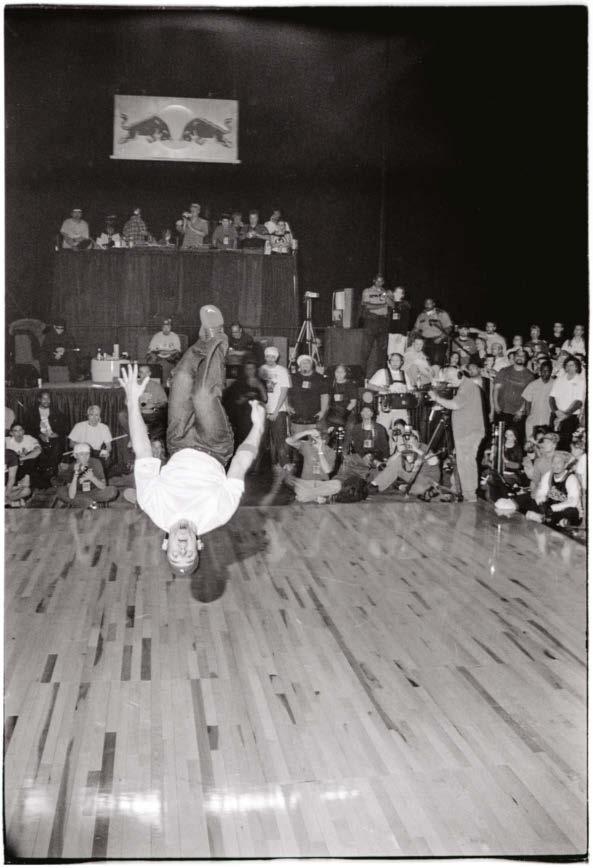

B-Boy Alexander “El Niño” Diaz (right) competes against Fouad “Lil Zoo” Ambelj of Morocco at the Red Bull BC One World Final in Rome in 2015. Diaz won the second Lords of the Floor event in 2002. Jeromeskee of Massive Monkees performed at Lords of the Floor while still a senior in high school. Afterward, he headed straight to his prom.

“Everyone in that lineup was a heavy hitter. Most previous events drew local and community interest, but Lords of the Floor received national attention,” says B-Boy El Niño, the breaking champion who learned the art at the age of 5 and won the second Lords of the Floor event in 2002 with his crew, the Floor Brats. “Before Lords of the Floor, we had to collect and trade VHS tapes, but this made it to DVD, which changed everything. All the B-Boys in Russia told me that it was some of the first footage they’d ever seen. It completely changed the game.”
Breaking traditionally centered on the crew,but as competitions helped broaden worldwide appeal, the combination art form/sport began to evolve toward two-on-two matchups and then individual battles. In this respect it mirrored hip-hop itself, which became more about solo acts than the group. During its relative infancy, the berserk innovations and pop-and-lock novelty captured short-lived mainstream attention spans in the ’80s. Films, documentaries and the occasional sitcom exploited it; the average consumer saw it as a fad. But by the ’90s, breaking matured in the underground. Regional battles proliferated; a standardized point system of evaluation took root. Credible judges set a serious tone without stripping it of its playfulness. Everything began to ascend.
A pivotal turning point arrived in 2004, when Red Bull picked up the mantle of Lords of the Floor to form its now venerable BC One competition. One of the few international breaking clashes without a crew component, BC One featured 16 B-Boys and one-onone showdowns. (A B-Girl bracket was added in 2018.) Contestants from North America, Eastern Europe, Western Europe, Latin America, Asia Pacific, the Middle East and Africa battled in regional finals for the chance to dazzle on the world stage.
As the next generation of breakers emerged, they began to build on the blueprint of their predecessors, adding a level of gravity defiance that not even the

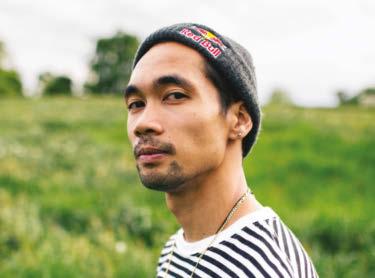
iconic Rock Steady Crew could have conceived. Like its cousin, hip-hop, breaking has an omnivorous appetite that sweeps up all contemporary influences. It grew to encompass everything from new dance routines to gymnastics to martial arts like capoeira. And just like hip-hop, the art form evolved away from improvised freestyle dances to more meticulously planned routines.
“Compared to how people remember it from the ’80s, it’s gone super Saiyan,” says Las Vegas-based B-Boy Ronnie, the influential founder of Full Force Crew. The winner of the 2007 Red Bull BC One World Final, he also took home the crown on Season 2 of the hit MTV show America’s Best Dance Crew (with his partners in Super Cr3w).
“In the Lords of the Floor days, breakin’ was mostly about footwork and ground power moves, but when air flares and air power got involved, it became undeniable as both an artistic dance and athletic sport,” Ronnie adds. “Now you’re expected to be able to do everything—dance to the music and have an X factor, an original presence. Back then, if you spun around your head 10 times in a row it seemed amazing.”
The Guam native, born Ronnie Abaldonado, cites the 2007 Red Bull BC One tournament in South Africa as another integral moment in its global popularization. Held at an abandoned power station in what was formerly the Soweto township, Ronnie compares it to the Jean-Claude Van Damme martial arts film, Bloodsport.
“They spray-painted all the walls, and every time a competitor would lose, they’d cross their name out with the spray can,” he explains. “It was very athletic and raw; it took things back to the true essence of breaking.”
Old stereotypes about breaking began to be shattered. In their place was a new, lightning-limbed manifestation, experiencing a renaissance in plain view. The Jabbawockeez won the first season of America’s Best Dance Crew. Soon after, the ski-masked
Ronnie Abaldonado, the influential founder of Full Force Crew, won the BC One World Final in 2007.

Omar “RoxRite” Delgado Macias has won more one-on-one face-offs than almost any B-Boy in history. He was the first to clock 100 total wins and won the BC One World Final in 2011.
and gloved collective appeared in national Ford, Pepsi and Gatorade commercials. They appeared on Dancing with the Stars and So You Think You Can Dance. By 2010, they had their own Las Vegas show. That same year, the filmmaker Alastair Siddons released Turn It Loose, a documentary that followed Ronnie and some other legendary breakers—Hong 10, B-Boy Taisuke and B-Boy RoxRite.
“Before BC One came to the forefront, it was all about the crew battles, but then it became more about going one on one,” says RoxRite (aka Omar Delgado Macias), who has won more one-on-one face-offs than perhaps any B-Boy in history. The first to clock 100 total wins, he took home the top prize at the 2011 Red Bull BC One in Moscow. In his spare time, he’s taught classes on breaking and hip-hop culture at Harvard and MIT.
“By 2009 and 2010, a lot of promoters had built an international network,” RoxRite adds. “B-Boys developed an organized circuit to compete on, which led to where we are now—where it’s become an Olympic sport.”
As the art form evolved, it made strides toward greater inclusion. One of the dancers who helped pave the way is B-Girl Sunny, a former gymnast who encountered competitive breaking in 2008 while studying at the University of Pennsylvania. An oncampus crew called Freaks of the Beat invited her to a free class and she was quickly hooked.
“Back then, there was so much energy and beef between crews, states and regions,” Sunny says. “However, it was really vibrant. The tension kept everyone going. That was the motivator. As soon as you’d walk into a room, you’d feel the eyes of the other crews. ‘Oh, that’s so-and-so over there.’ And you had better put your bags down by the crew you were down with, or else it probably wasn’t safe.”
While breaking has historically been a heavily male phenomenon, female breaking crews like the Dynamic Rockers, the Lady Rockers and the Female Break Force have existed since the art form’s inception. While they never received the attention of the Zulu Kings or Rock Steady, the latter crew did prominently feature Daisy “Baby Love” Castro, the
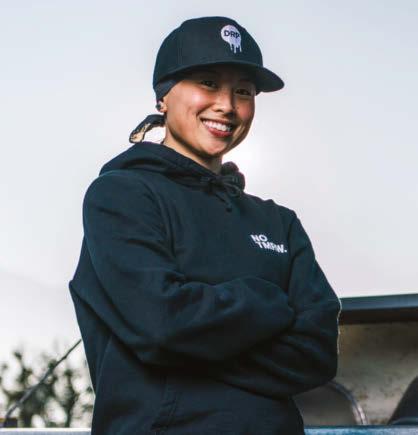
As breaking has evolved, dancers like B-Girl Sunny, a former gymnast, have paved the way for greater inclusion.

first B-Girl to earn national fame. Nonetheless, the “boys club” mentality was something that B-Girl Sunny had to overcome.
“The only reason that I’ve been able to stick with it is that I don’t care what anyone says or thinks about me,” Sunny says. “I have this rebellious streak where if you say I can’t do it, I’m going to do it. That’s why I’ve stuck around and put up with all the crap.”
Despite the entrenched machismo in American B-Boy circles, Sunny achieved tremendous success over the last decade, appearing in the BC One World Finals and the finals of the 2019 WDSF World Breaking Championships in China. In 2015, she won the Outbreak Europe B-Girl solo battle, and she’s regarded as one of the favorites for the American team at the 2024 Olympics. Her work helped set the foundation for another 2024 hopeful, California B-Girl Logistx. The youngest member of the BC One All-Stars, the 17-year old Logistx is already a veteran, having participated in competitive cyphers for nearly a decade.
“It’s still a work in progress, but over the last five years women in the scene have become more empowered, accepted and respected,” Logistx, born Logan Edra, says. Introduced to dance and hip-hop culture by her father, Logistx was already a devotee of A Tribe Called Quest, Nas and Wu-Tang by the age of 7.
“As the social climate has shifted, B-Girls have become empowered,” she continues. “As this
B-Girl Sunny competes during the Red Bull BC One Camp in Houston in 2019.

At 17, B-Girl Logan “Logistx” Edra is already a veteran on the scene and the youngest member of the BC One All-Stars. She has her eyes on the 2024 Summer Olympics in Paris.

For three decades, Chris “Cros 1” Wright has elevated competitive breaking with his Freestyle Sessions.
generation of females reaches higher levels, it’s allowed us to get more attention, have more of a platform and speak our truth about the struggles that we’ve gone through.”
As technology has shrunk the size of the world, one of the most dramatic shifts has been the globalization of the scene. By the early ’80s, films and television appearances helped evangelize breaking in Germany, Japan and Italy. Mexican Americans in Los Angeles and Cuban Americans in Miami became obsessed with the art form. But as the 1990s became the 2000s, and rising New York rents made it increasingly difficult for artists to live there, the center of gravity drifted westward to Los Angeles and Las Vegas.
Simultaneously, the DVD explosion and the arrival of YouTube allowed breaking to reach every corner of the Earth. In Japan, breakers emerged as masters of technical ability, learning the art at rigorous breaking academies that helped them produce two of the last five BC One male champions. It wasn’t just a series of dance moves; they revered it as a tradition and a culture. Korea, France and the Netherlands have become international meccas. Russia is a powerhouse, too— having won the last two female solo BC One championships. In America, young B-Boys would often head overseas to win tournaments, and in the process, burnish their own celebrity.
Beyond the scenes, thousands of B-Boys and B-Girls played vital roles in the growth and elevation of the art form. Over the past quarter-century, few have been more impactful than Chris “Cros 1” Wright, a Johnny Appleseed of breaking, whose Freestyle Sessions have become staples connecting dancers across the globe. A San Diego native, Wright is a link between generations, having gotten his start as a breaker and graffiti artist in the ’80s after first hearing a Run-DMC cassette. In 1997 he threw the first Freestyle Session, which has become a fixture on the international circuit. The competition has taken place in over 40 countries, including Japan, South Korea, Russia, France, Turkey, Spain, Australia, Mexico, Brazil and China.
“The goal with Freestyle Session was always to elevate the platform and help connect the dots,” says Cros 1, who also co-hosted the original Lords of the Floor. “By 2010 you could really see the world opening up to breaking. There was an integration between America and the rest of the globe, and things got more professional. In the ’90s, the only crews really traveling all over were Rock Steady, Air Force and Battle Squad in Europe. Now everyone travels all over the world. It’s all about looking for that perfect event, that vibe, that journey.”
In addition to spreading the gospel of breaking through his competitions, Cros 1 has served on the board of the Youth Olympic Committee, which successfully advocated for its inclusion on the list of Olympic events.
“A lot of people say the Olympics add legitimacy, but I think we already had it,” Cros 1 adds. “It
definitely adds to the conversation, though. I did breaking events in 40 cities in 40 different countries and it wasn’t a big deal to my father, but the moment I told him that it was an Olympic sport, he made a Facebook post to brag about it. The Olympics will have never seen anything like this.”
Breaking’s journey to become an Olympic sport is the end result of nearly a decade of public and private lobbying. It also dovetails with the International Olympic Committee’s espoused goals of gender equality and youth engagement. Hence, breaking will join skateboarding, sport climbing and surfing in the games. But unlike the other competitions in Paris, breaking straddles several worlds. It is a deeply embedded part of hip-hop culture and an artistic mode of self-expression, as well as a sporting endeavor.
Despite the commercialization that has occurred over the last half-century, to watch video of this generation of Olympic hopefuls is to understand how the culture has been preserved. As with an MC searching for the right pocket to fit his bars, B-Boy Victor, the legendary 27-year-old Red Bull BC One All-Star, melds seamlessly into the beat. Instead of using words, his hands and legs become
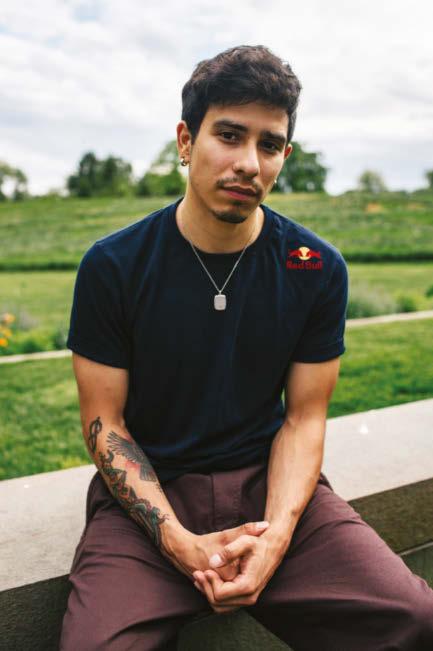
B-Boy Victor at the Red Bull BC One Cypher Central Asia in Almaty, Kazakhstan, in 2018. BC One All-Star Victor Montalvo, another 2024 Olympic hopeful, won an unprecedented four world titles in 2015.

Growing up in Alaska, B-Boy Icey Ives learned the basics of breaking from elders in the local scene and by watching battles on YouTube. In 2019, the Olympic hopeful won the 2019 BC One U.S. National Final.

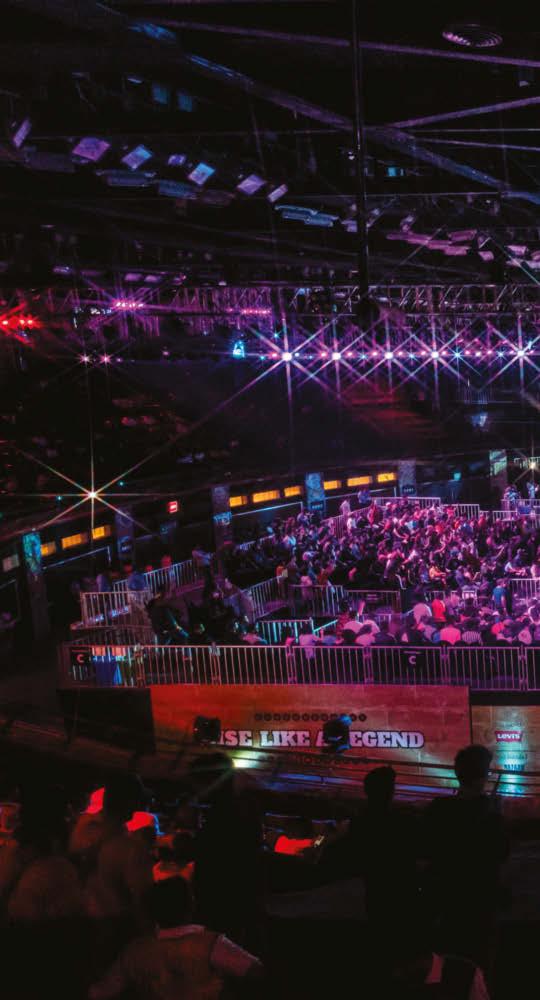
a spellbinding blur; he drops to the floor and bounces up as though propelled by a pogo. The breakbeats seem to reverse course and suddenly adhere to his movements.
This is hypnosis via dance. His frame seems allergic to the limitations of gravity or ligament strain, a majestic whirlwind of air flares in perfect rhythm, blisteringly fast headspins and bounces off the ground. You’d have to go frame by frame to understand exactly how Victor is doing it. Yet it’s simultaneously familiar: This is the heritage of the greats, updated, renovated and still true to the spiritual essence.
“I feel like the Olympics will make breaking bigger than it ever was during the ’80s,” says the winner of an unprecedented four world titles in 2015, a Florida native born Victor Montalvo. He learned the art as a young child from his father, who had been a B-Boy in Mexico. “It’s always a good thing for more people to know about breaking, but we have to make sure to teach the foundation. This is about finding your own identity and style. It’s about being creative and trying to bring something new to the table to create a legacy.”
For all the physical advances and technical breakthroughs, the notion of the wild style continues to loom large. This is the same concept that dominated the dance moves and MC salvos at ’70s Bronx block parties soundtracked by “Apache” and “The Funky Drummer.” Nearly a half-century after it began, the tradition is sustained by this sense of generational history. Jeremy “Icey Ives” Viray, 26, grew up in Anchorage, Alaska, about as far away from New York City as you can get in the United States. But he learned the basics from the elders of the scene, the Alaskan Assassins, who schooled him on how to be a B-Boy. He filled in the
The Red Bull BC One World Finals helped set the stage for the next level of global competition: the Olympics.
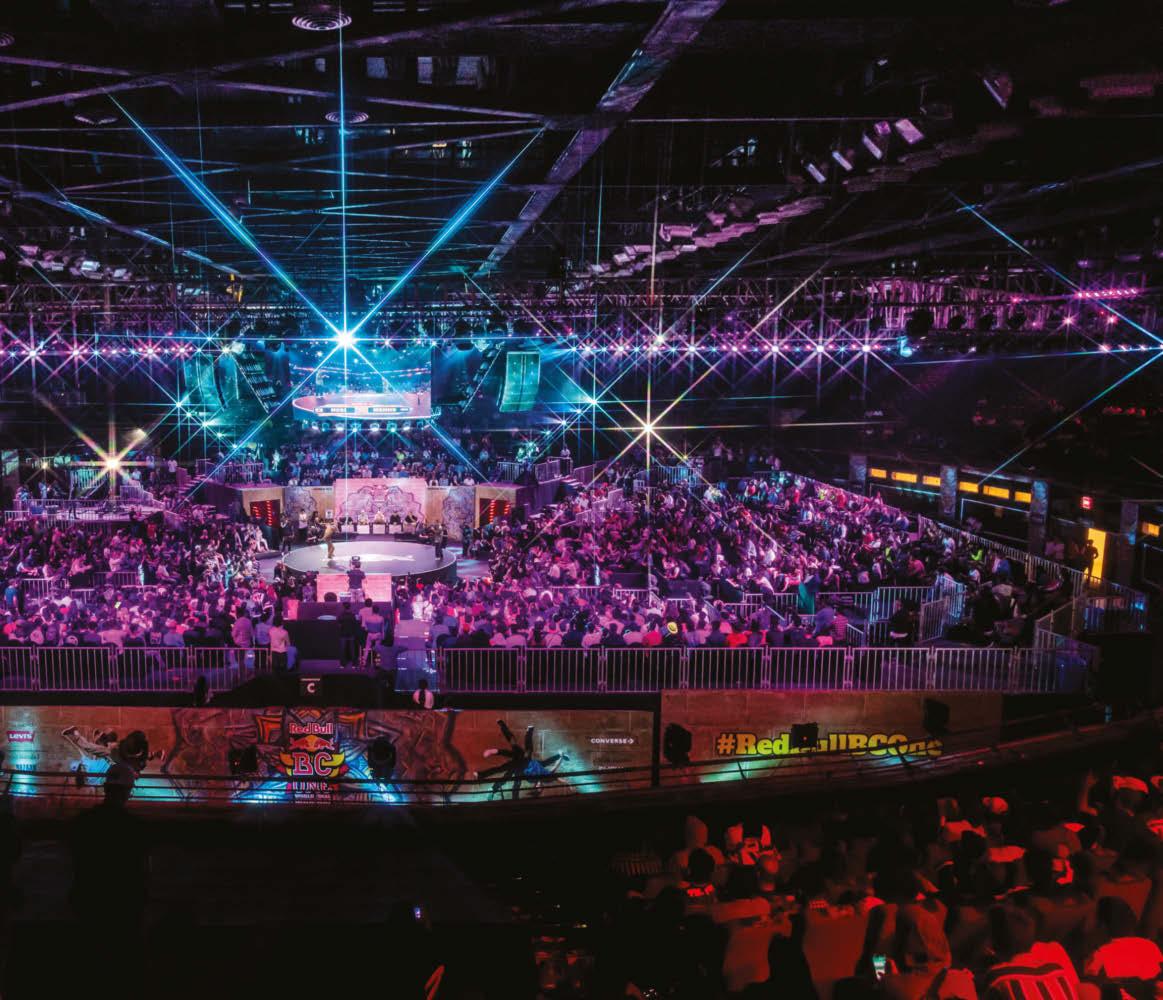
blanks by watching battles on YouTube until the 2024 Olympic hopeful was old enough to travel to the lower 48 to compete.
“Breaking being a part of the Olympics is huge for us,” says Ives, the 2019 BC One U.S. National Champion. “There’s obviously pros and cons to everything. Some people will represent B-Boying as a sport and others will rep it as a culture; some will see it as a little bit of both. But it’s going to lead to so many future opportunities for dancers. This is a platform that will allow us to get worldwide sponsorship and endorsement deals.”
What’s clear to all parties involved is that if breaking is to continue to flourish, it must stay authentic to its roots as a dance, art form and lifestyle. It’s not gymnastics or the latest X-Games crossover sport—it’s a mode of being, a set of commandments, a kinetic code passed down from the older gods. It is a solemn and skillful tradition but one created for the purpose of joy, fun and community. Ives was born in the mid-’90s but pledges allegiance to the Rock Force Crew, founded in 1983. These are the ones who taught him how to keep his ground and represent the culture to the world, to keep the torch lit.
“I hope all this leads to people coming together more in the future,” Ives says. “Breaking is a way for us to step away from the negativity and the tension. It’s a form of meditation. We dance to set ourselves free from these emotions. I want to see the younger generation and the older pioneers of the game build more and share each other’s knowledge. We all need to keep learning from each other.”




